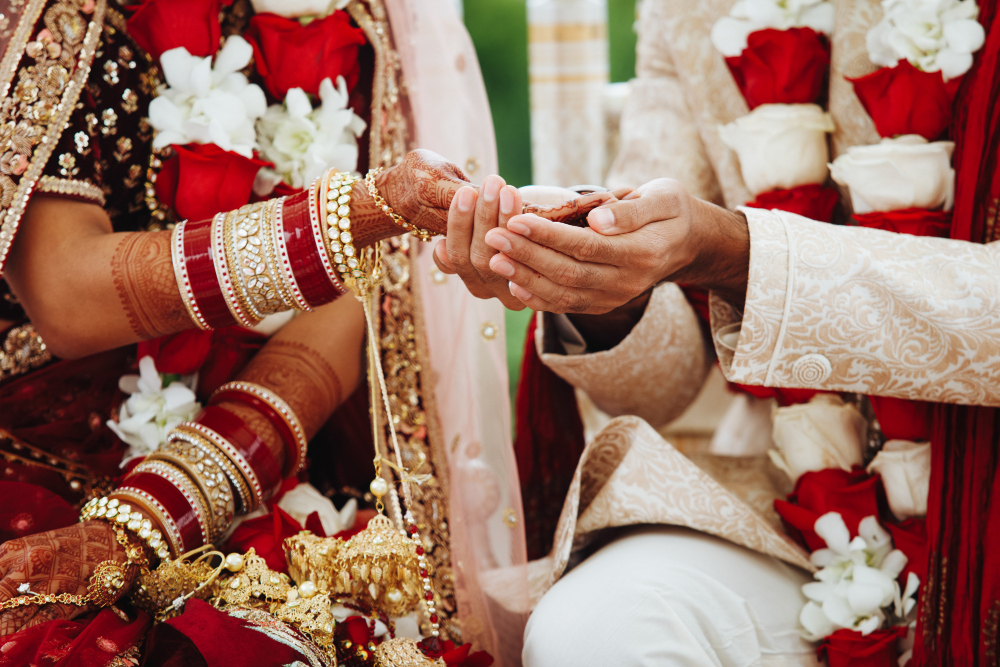The mangalsutra is much more than a piece of jewelry in Indian culture. It’s a symbol of love, commitment, and the sacred bond between a married couple. Rooted in centuries of tradition, the mangalsutra remains a cherished ornament and an embodiment of marital harmony. Let’s explore what makes this jewelry so special and why it continues to be an important part of married life in India.
1. Historical Roots of the Mangalsutra
The tradition of the mangalsutra dates back to ancient Hindu practices. The term mangalsutra is derived from two Sanskrit words: mangal, meaning “auspicious,” and sutra, meaning “thread.” Traditionally, the groom ties the mangalsutra around the bride’s neck during the wedding ceremony, symbolizing their union and his vow to protect her.
2. Symbol of a Sacred Bond
In Hindu culture, the mangalsutra is considered a talisman of protection for the husband. Worn close to the heart, it signifies the commitment a couple has to each other. The black beads in the mangalsutra are believed to ward off negative energy, ensuring safety and well-being for the couple.
The tying of the mangalsutra during the wedding ceremony is one of the most emotional and pivotal moments. It marks the transition from singlehood to married life, and for the bride, it is a moment of commitment to her new family and partnership.
3. Mangalsutra Designs and Regional Variations
India’s diversity is reflected in the many regional styles of the mangalsutra. In Maharashtra, the vati mangalsutra features two gold cups, symbolizing the union of two souls. In Tamil Nadu, the thaali often has religious symbols that signify faith, like the goddess Lakshmi. North Indian styles focus on elegance and simplicity with a single, sleek design that can be worn daily, while South Indian styles might include a more elaborate pendant, representing prosperity and heritage.
Regardless of the design, the central theme remains consistent: it’s a symbol of marital commitment that women cherish and hold close to their heart.
4. Modern Adaptations of the Mangalsutra
In contemporary times, the significance of the mangalsutra is evolving. Modern brides are incorporating innovative designs that make it easier to wear daily and match with various outfits. Today’s mangalsutras often blend tradition with trend, featuring minimalist patterns, diamond settings, and shorter chains. This allows women to honor their heritage while aligning with their personal style.
Jewelry designers are also embracing this evolution, creating sleek and chic mangalsutras that appeal to the modern Indian woman while preserving their symbolic essence. Now, brides can choose a design that resonates not just with tradition, but also with their personal style.
5. Beyond Tradition: Emotional and Cultural Importance
For many women, the mangalsutra is a constant reminder of their commitment and connection to their spouse. Even though it may evolve in appearance, the mangalsutra’s core significance remains unchanged. It’s a connection to one’s cultural roots and an affirmation of the bond that marriage represents.
Wearing a mangalsutra is also a source of pride and identity. It conveys a sense of belonging, both to one’s partner and to a community that shares this unique tradition. The emotional connection attached to the mangalsutra goes beyond its appearance; it’s the sentiment, the shared history, and the commitment that it represents.
6. Conclusion
The mangalsutra is not merely jewelry; it’s a symbol of love, trust, and the journey of life shared by two people. As it continues to adapt to modern styles and preferences, its core significance remains intact. It reminds us of the deep-rooted traditions that continue to define Indian culture, providing a bridge between the past and the present for millions of couples.
In a world where traditions are evolving, the mangalsutra stands as a beautiful reminder of the sacred values and love that marriage represents. Its significance lies not only in its form but in the emotion and meaning that it holds, making it a timeless treasure in every married woman’s life.

